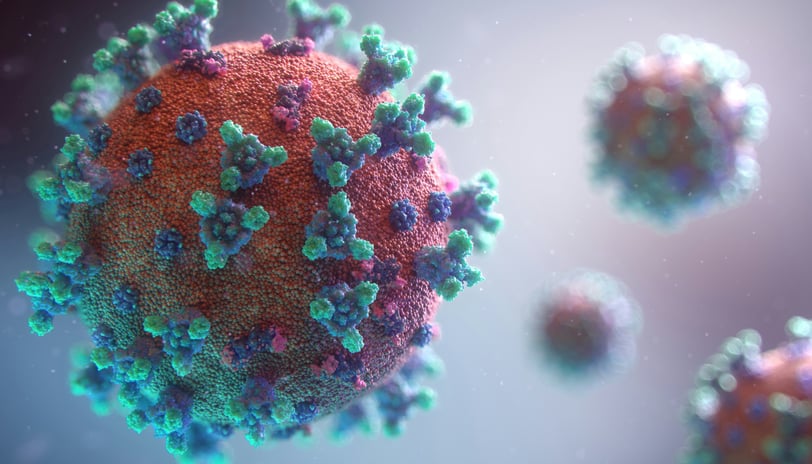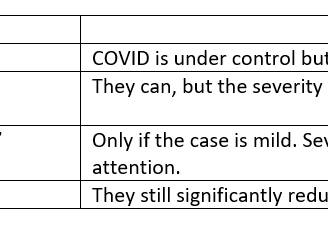COVID Isn’t Over: Are We Ready If It Returns?
India COVID-19 Update: 257 Active Cases — Is the Pandemic Over? India reports 257 active COVID-19 cases, raising questions about a possible second wave. This blog covers India’s latest COVID-19 statistics, infection rates, and safety guidelines. Understand the impact on public health, economy, and job market amid ongoing COVID-19 variants. Stay informed with prevention tips and COVID-19 updates to protect yourself and your community.
THE INDIA MIRROR
Lekha
5/7/20256 min read


Latest health bulletin has recorded 257 active cases of COVID-19 in India, an unsettling yet crucial reminder that the pandemic is not entirely behind us. For a country with a population of 1.4 Billion, this number may seem insignificant, but is clearly as reminder of an uncertain past. This also raises an essential question: What if COVID-19 hits India again?
This blog is not meant to trigger a panic. Since most people till this date are not even aware that some active cases are found, this really calls for a reality check. This blog is meant to be an awareness guide to equip citizens with knowledge, insight and calm preparedness. Let’s try to understand what another wave could mean, what could be the impact and how to act our responsible best if COVID-19 re-emerges.
Understanding the Current Situation
Current active COVID cases in India may seem nothing in front of tens of thousands cases seen during 2021 Delta wave. However, epidemiologists and public health experts argue that complacency is more dangerous than the virus itself. Here’s why:
Viruses Mutate: Nature of SARS-CoV-2 virus is to evolve. Each new variant is found to behave differently in terms of transmissibility, severity, or vaccine resistance.
Low Numbers Can Grow Fast: Viral transmission is seen to be exponential in nature and small numbers of cases can burst out rapidly if not contained properly.
Seasonal Changes and Social Behavior: With festivals, weddings, and other mass gatherings becoming more frequent post-pandemic, the chances of spread increase if protocols are not followed.
The Road We've Travelled: India's COVID Timeline
To understand how to prepare for a potential resurgence, we must reflect on how India dealt with the pandemic in phases:
1. First Wave (March 2020 - Early 2021):
India witnessed one of the strictest lockdowns in the world. Efficiency of our healthcare system was put to test, logistics were nightmares while essential supplies were managed.
2. Second Wave (April - June 2021):
Delta variant reaped catastrophe around the globe. Hospitals were overflowed, oxygen supply suffered, and mortality rate spiked. At the same time, citizens, NGOs and other organisations collaborate to help each other.
3. Third Wave (Late 2021 - Early 2022):
Third wave was marked by the emergence of highly transmissible Omicron variant. Surge is cases were reported but healthcare system was not overwhelmed thanks to the widespread vaccination and previous exposure.
4. Post-2022 Era:
Vaccines became widely available, booster doses were administered, and India reopened fully. But the virus didn’t disappear, it adapted and lingered.
Where We Stand Today
1. Vaccination Coverage:
India administered over 2.2 billion vaccine doses. However, booster uptake remains low, especially in rural areas. There is a pressing need to:
· Boost vaccination drives
· Reassure vaccine safety
· Introduce variant-specific boosters if required
2. Healthcare Preparedness:
Post-2021, healthcare infrastructure improved significantly:
· Increased ICU and oxygen beds
· Digital health monitoring platforms like CoWIN
· Decentralized testing and diagnostics
3. Public Awareness:
From knowing how to use oximeters to the importance of handwashing, public health literacy has drastically improved. Still, fatigue and misinformation linger.
Possible Scenarios If COVID-19 Resurfaces
Instead of expecting the worst already, rather be prepared for different outcomes.
1. In case of a Mild Wave
Such scenario with little cautiousness can be contained with ease. Most cases remain asymptomatic or mildly symptomatic. They can be easily managed at home with telemedicine support. Need of hospitalization is very rare in such cases while economic and social life continues normally. All we need is to stock up masks and sanitizers, care for hygiene and stay updated with government advisories.
2. In case of Moderate Wave
Hospital admissions may increase but still manageable. Following mild restrictions would become crucial, like; mask mandates, limits on public gatherings etc. Vulnerable populations (elderly, immunocompromised) will need more focus. Working from home will be the most likely scenarios. Community care system should be reinforced as well as updates on vaccination status.
3. In case of Severe Wave
Hospitalization increase tremendously and hospitals go under pressure. Emergency protocols are activated. Depending upon the area wise severity containment zones are reintroduced. Lockdowns are imposed, remote working may return. Implementation of personal lockdown plans (grocery stock, financial buffer) will help in this scenario.
Busting the Myths: Facts That Matter
If COVID-19 Returns: What It Could Mean for Jobs and the Indian Economy
No one can truly forget the year 2020 when the world locked down due to pandemic. Economy not just came to a pause, it trembled. People became jobless overnight, small business shuttered and global markets reeled. Now, with re-emergence of 257 active COVID-19 cases in India, once again there is a new wave of uncertainty. Could there be a resurgence? And most important- what would it mean for jobs, incomes, and economic growth?
India’s Economic Story So Far: From Shock to Recovery
To understand the future, we need to revisit the past.
1. 2020: The Great Economic Shock
· GDP shrank by 24.4% in Q1 FY21-the steepest contraction in independent India’s history.
· MSMEs (Micro, Small, and Medium Enterprises) were the worst hit; many permanently closed.
· Migrant labor crisis revealed deep vulnerabilities in the informal sector.
· Sectors like hospitality, travel, retail, and construction were paralyzed.
2. 2021: Delta Wave and Delayed Healing
· Second wave impacted consumer confidence and delayed recovery.
· However, vaccine rollout and digital acceleration enabled partial rebound.
3. 2022-2024: Resilience, Reforms, and Recovery
· India bounced back with 7%+ GDP growth, driven by digitization, export resurgence, and government spending.
· Employment shifted: gig economy, hybrid work, and tech-based roles flourished.
· Yet, inequality widened-high-skill jobs recovered faster than low-wage or rural work.
Where we Stand Now (May 2025)?
Inflation: Moderate, (~4.7%).
Unemployment: Stabilized at ~7-8% (CMIE data), though youth and rural joblessness remain high.
GDP Growth: Forecasted at 6.8% for FY25, driven by domestic demand and services sector.
Digital Economy: Growing rapidly, contributing 20%+ to GDP.
What If COVID-19 Hits Again? Worst Case Economic Scenarios
In case of mild to moderate spread, situation can be contained without posing much harm to economy. But at this point it will become very crucial that with our combine efforts we don’t let the situation reach an alarming level. If COVID-19 reaches or returns in a severe form, the economic consequences could be deeply unsettling. In this worst case scenario, strict lockdown imposition will remain the only option, forcing major metros, overwhelming hospitals, and forcing businesses, schools, and public transportation to shut down again. The ripple effect would immediate; low consumer confidence, investment activity stalled, and India’s growth momentum abruptly derailed. With all of this going GDP will definitely decline. Daily wage earners, informal workers, and those in sectors like hospitality, construction, retail, and tourism will take a severe hit without income or safety nets. After lots of brilliant minds coming together, India’s GDP is finally on the path of recovery. But is it in a position to take another, blow? Certainly not. Youth unemployment is India is a significant problem and with pandemic coming into the picture it will only rise. We will also face migration crisis where urban labourers will return to their villages. Informal sector will be more volatile than ever and informal sector which employs almost 80% Indian workforce may collapse under the pressure of zero cash flow and minimal digital intervention.
In response to this, government may introduce some relief packages, expand public distribution and employment guarantee schemes, and provide urgent liquidity to MSMEs. But this swift policy implementation would make the road to recovery any smooth and faster. People are already traumatized with the experience of 2020 and 2021, which could lead to further mistrust and delayed investments. Keeping that in mind, ideal scenario would be to avoid the resurgence through our united efforts as a nation rather than fighting the fire later and getting scorched in the process.
Conclusion
Recovery is not Rewind, It’s Reinvention
If COVID-19 re-emerges, economic impact will depend on preparedness not panic. We have been through this, we have seen it all and hence should use that experience to prepare ourselves in advance for the worst to take place. Indian economy has proved it resilience time and again, but inclusivity is the key. This time we shall not leave the poor, informal and young behind. And for that, government, businesses, and citizens must collaborate with clarity and compassion.
So yes, another pandemic wave could test our economy again. But this time, we will not just survive, we’ll adapt and evolve.


Know more about us
Your go-to for unique content solutions.
Services
© 2025. All rights reserved.
QUICK LINKS
View our Privacy Policy and Terms & Conditions.
